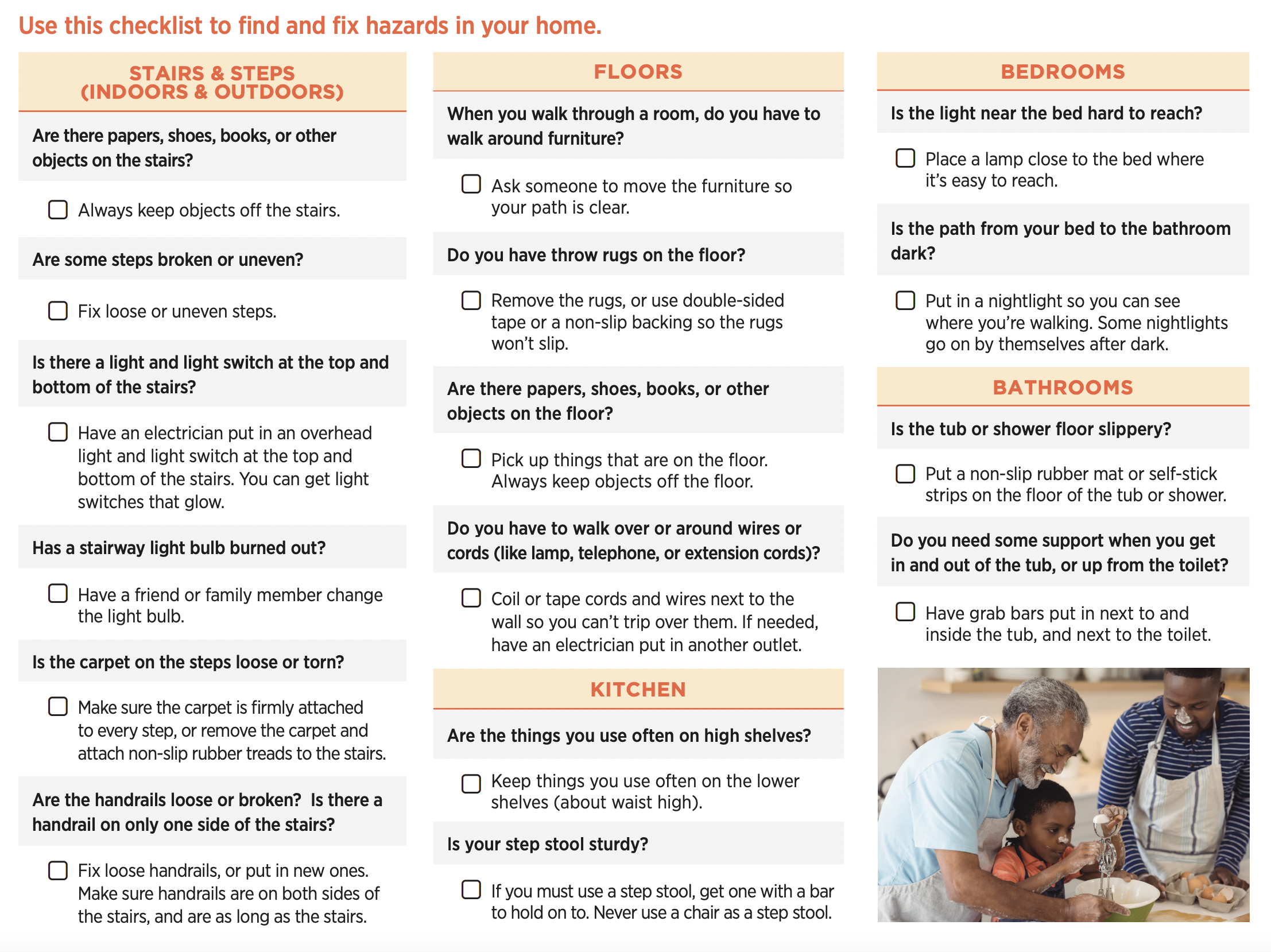10 Easy Facts About Dementia Fall Risk Explained
Table of ContentsAll About Dementia Fall RiskThe Main Principles Of Dementia Fall Risk 10 Simple Techniques For Dementia Fall RiskThe Definitive Guide for Dementia Fall RiskThe 9-Minute Rule for Dementia Fall Risk
You could be worried since you have actually had a fall before or due to the fact that you've seen you're starting to really feel unsteady on your feet. You may have seen modifications to your wellness, or just feel like you're decreasing a little. Whatever the factor, it isn't unusual to end up being mindful and shed confidence, and this can stop you doing things you used to do and make you feel a lot more separated.If you've had an autumn or you have actually begun to really feel unstable, tell your doctor even if you really feel great or else. Your doctor can check your balance and the method you walk to see if renovations can be made. They might have the ability to refer you for a drops risk assessment or to the falls prevention service.
This info can be acquired with meetings with the person, their caretakers, and a testimonial of their medical records. Begin by asking the private about their background of drops, including the frequency and situations of any type of recent drops. Dementia Fall Risk. Inquire regarding any kind of wheelchair issues they may experience, such as unsteady or problem strolling
Conduct a comprehensive evaluation of the individual's medications, paying particular attention to those known to increase the threat of drops, such as sedatives or medicines that lower high blood pressure. Identify if they are taking multiple drugs or if there have actually been recent changes in their medication routine. Review the person's home atmosphere for potential hazards that can boost the risk of drops, such as bad illumination, loose carpets, or lack of grab bars in the restroom.
The Dementia Fall Risk Diaries
Overview the individual via the autumn risk evaluation form, discussing each question and taping their reactions properly. Ensure that the specific understands the function of the analysis and feels comfy offering truthful responses. Compute the total danger rating based upon the responses supplied in the analysis kind. Figure out the person's threat classification (reduced, tool, or high) based on the total score and the existence of automated risky standing elements.
Regularly check the person's progress and reassess their threat of drops as needed. Give continuous education and assistance to advertise safety and lower the danger of falls in their day-to-day living activities.
Lots of researches have actually shown that physical therapy can assist to lower the risk of falling in grownups ages 65 and older. In a brand-new research (that checked out drops threat in women ages 80 and older), researchers determined the economic influence of picking physical treatment to stop falls, and they discovered that doing so conserves $2,144, consisting of all the covert expenses of your time, discomfort, missed out on life occasions, and the bucks spent for solutions.
Things about Dementia Fall Risk
Analyzing your balance, strength, and strolling ability. A home safety and security evaluation. Based on the evaluation results, your physical specialist will certainly develop a strategy that is tailored to your details needs.
Older grownups who have trouble walking and chatting at the same time go to a greater threat of dropping. Dementia Fall Risk. To assist raise your safety during everyday activities, your physical therapist may design a training program that will certainly challenge you to keep standing and walking while you do one more job. Examples include strolling or standing while counting backwards, having a conversation, or index lugging a bag of groceries
Your physical specialist also can determine which tasks you ought to Visit This Link prevent to remain safe. Community-based falls avoidance programs aid people to: Decrease their concern of dropping. Set goals for boosting their physical task. Make their homes safer. Exercise much more to boost their toughness and balance. These programs typically are led by volunteer trains.
The smart Trick of Dementia Fall Risk That Nobody is Talking About

Measles, or rubeola, is a very infectious, acute viral transmittable condition brought on by the measles virus. Some individuals believe of measles as just a breakout and fever that clears in a couple of days; nevertheless, measles can cause serious wellness difficulties, especially in youngsters younger than 5-years-old. The very best defense against measles is the measles, mumps, and rubella (MMR) vaccination.
Autumns are a common reason of injury among older grownups. According to the CDC, in one year alone, fall-related injuries added to over $50 billion in clinical costs (Dementia Fall Risk). In health center settings, older grownups are at specifically high danger of drops due to the fact that their reduced wheelchair from being confined to an area or bed.
How Dementia Fall Risk can Save You Time, Stress, and Money.

She has a clinical history of seizure disorder and high blood pressure. She is obtaining an IV infusion and taking Gabapentin and Lasix. She has no history of drops, her gait is stable, and she voids without problems. The previous nurse states that she asks for help to the restroom when she needs to go.
Examples of usual autumn interventions/measures include: Making sure a person's important products are within reach. Putting the client's bed rails up with the alarm on. Helping a person while they're rising from bed. Beyond comprehending exactly how to use the Johns Hopkins Fall Threat Evaluation Device, it is very important that centers integrate its use right into a more thorough loss prevention strategy.